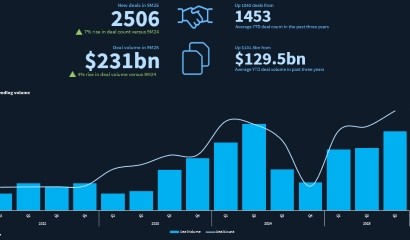COURT: Class composition fairness arises in Sino-Ocean London convening hearing
- Dissenting group complains that the classes were created artificially
- Class A would be able to cram-down dissenting creditors
- Current shareholders’ equity to be significantly diluted
The fairness in the composition of the classes and their different recoveries under the contested UK restructuring plan of Sino-Ocean Group Holding Ltd were central to the convening hearing that took place in the Rolls Building in London today (18 October).
Although Mr Justice Nicholas Thompsell accepted that the four classes proposed by Sino-Ocean Group will vote separately on 22 November on the plan, a large portion of the hearing revolved around the fairness of separating Class A (the class supporting the plan) from Classes B and C, with the possibility of Class A cramming down the others at the sanction hearing in early January.
Part 26A of the UK’s Companies Act 2006 plan, which covers around USD 6bn debt of Sino-Ocean Group, was announced in July and is inter-conditional on a parallel Hong Kong scheme, whose convening hearing is scheduled for 31 October.
Long Corridor Asset Management Limited was today before the judge to oppose the plan, as a holder of beneficial interests in notes for a value of around USD 85m, which Sino-Ocean Group seeks to compromise under the plan in the Classes B, C and D of creditors. It is also a member of the steering committee of an ad hoc group of noteholders.
On behalf of Long Corridor, Mark Arnold KC told the judge that only Class A creditors support the plan at the moment, as the class that is going to receive the lion’s share of the allocations under the plan. Having one assenting class would make it possible to cram down the dissenting classes under the restructuring plan tool introduced in 2020 in England.
According to Arnold KC, the basic principle of class composition – as per Virgin Active case law – is that a class must be confined to persons whose rights against the company are not so dissimilar as to make it “impossible” for them to consult together with a view to their common interest.
In the barrister’s view, the rights of the creditors in class A, B and C are not materially different, making it impossible for them to consult together, so Class A, B and C should form a single class, while Class D should remain separate as subordinated perpetual securities.
Arnold KC believes that the creation of four separate classes in this case is artificial to invoke the cross-class cram-down system.
Classes A, B and C are all unsecured creditors and would rank pari passu if the company were wound up, Arnold KC said. “In other words, their ‘rights in’ as against the company are materially the same,” the barrister held. In terms of recovery in the relevant alternative, the difference will not be significant either, according to Long Corridor’s representative.
Additionally, Arnold KC complained that Sino-Ocean Group has justified the separation of classes with the different restructuring consideration that the classes would receive according to its analysis of the relevant alternative, but this analysis was not provided to creditors with the practice statement letter, but just on 15 October, a few days before the convening hearing.
Therefore, Long Corridor and other creditors had not enough time to consider the relevant alternative analysis, which is fundamental to the company’s class analysis, the barrister said.
Meanwhile, Tom Smith KC, on behalf of Sino-Ocean Group, defended that any point on the artificiality of the class composition should be a matter for the sanction hearing, not be heard at the convening stage. He defended that the classes’ rights under the plan differ, so it is justified that creditors sit in different classes.
David Allison KC, representing the Co-ordination Committee (CoCom), said that his clients believe that “the plan is a good thing” and that it should proceed quickly, as any delay will be detrimental not only to the interests of Class A creditors but to all classes. The CoCom represents bank creditors holding HKD 6.4bn and USD 88.3m subject to the restructuring plan.
The judge in today’s hearing made several questions regarding the shareholders of the group, which are not part of the plan – although they will be economically affected – and told Sino-Ocean Group that an explanation of the effect of the plan in all categories of stakeholders would be “appropriate”.
Offshore debts
Hong Kong-incorporated Sino-Ocean Group, listed on the Hong Stock Exchange, is the ultimate holding company of a property development group with its assets primarily located in China. The group currently owns about 260 projects at different stages of development in various cities and regions throughout China, the company’s skeleton argument said.
Sino-Ocean Group operates on a very large scale; in its audited annual report for 2023, it stated that the group’s assets had a book value of about USD 30bn, although their realisable value would be far less in a formal insolvency, the skeleton added.
The group’s main shareholders are Chinese state-owned entities China Life Insurance with 29.59% and Dajia Life Insurance with 29.58%. The remaining 40.83% of shares are held by a diffuse group of investors, most of whom acquired their shares on the Hong Kong Stock Exchange, the same document noted.
Sino-Ocean Group is a guarantor of about USD 6.5bn of debt, of which approximately USD 6bn are included as liabilities under the plan, the company noted. According to the group, the distinguishing feature of the plan liabilities is that they are all unsecured, thus representing the junior tranches of the group’s finance structure.
The company defines the plan liabilities as “offshore” debts because they are provided by banks outside China or securities issued on the international capital markets. The liabilities outside the scope of the plan, however, are mainly bilateral loans with unique borrowers, guarantors or security packages and the company intends to compromise them with bilateral arrangements.
The group also has USD 4.2bn “onshore” senior secured debt for which Sino-Ocean Group Holding is not an obligor, the skeleton noted, adding that these liabilities are payable to banks and other creditors located in China and are typically secured over the group’s properties in that country.
According to Smith KC’s statement in today’s hearing, the company’s position is “pretty dire,” affected by the crisis in the Chinese property market that began in mid-2021. It is calculated, his skeleton argument said, that since July 2021 over 35 Chinese property developers have restructured USD 56bn of bonds.
The group’s credit rating was downgraded by Fitch in June 2023 and, in September and November 2023, it announced on the Hong Kong Stock Exchange that payments of offshore debts would be suspended until a restructuring could be implemented, the company’s representative noted. Sino-Ocean Group started restructuring negotiations in October 2023.
The company has defaulted on its debt and faces enforcement. The most immediate is a June winding-up petition in Hong Kong filed by Bank of New York Mellon regarding a USD 13m undisputed debt. This is expected to be heard on 23 December, but Arnold KC told the judge today that the ad hoc group has no objection to adjourning the hearing until the English restructuring is decided.
Plan structure
Smith KC noted that the relevant alternative to the restructuring plan is entering into formal insolvency, so the plan aims to avoid the destruction of value in the insolvency and to restore the group to substantial health by restructuring four classes (A to D) of unsecured debt. It is expected to be approved by, at least, Class A creditors.
The company maintains that, in the relevant alternative, the mid-point of the expected recoveries for Class A creditors is 7.4%, for Class B 3.5%, for Class C 1.4% and for Class D 2.1%.
Justice Thompsell said today that the two-day sanction hearing that will take place in the week starting on 13 January will include cross-examination of experts on the “relevant alternative”.
The plan involves the release of all outstanding principal and interest in respect of the plan liabilities in exchange for a package of USD 2.2bn “new debt” in the form of new loans or notes. Then, the balance of the plan liabilities will be reinstated as new “mandatory convertible bonds” into shares of the company or “new perpetual securities,” depending on the creditor’s choice.
Concerning the perpetual securities, the barrister explained they are subordinated liabilities without maturity date but with a right to distributions of 1% per annum, that the company can defer in certain circumstances. Justice Thompsell noted that they did not seem “terribly interesting” securities.
As for the most problematic feature of the plan, the allocation, Smith KC said that Class A creditors will be entitled to receive a pro-rata share of new debt for USD 1.33bn, corresponding to 65% of their existing debt claims. The Hong Kong scheme will give effect to the same compromise, but only in relation to the Class A creditors, the company’s skeleton argument said.
Meanwhile, Class B creditors will be entitled to receive a pro-rata share of new debt claims in the total sum of USD 593m (about 30% of their existing debt), Class C creditors will be entitled to receive a pro-rata share of USD 160m (12% of their debt) and the Class D creditors will obtain the pro rata share of USD 117m (getting 18% back).
Additionally, the company’s skeleton argument said that the plan would result in a “significant dilution” of the equity for the existing shareholders.
If the new mandatory convertible bonds are allocated in the maximum amount and converted into equity after two years, the equity of China Life Insurance and Dajia Life Insurance will be reduced to around 30%, the minority shareholders’ equity will be reduced to about 20.7% and the remaining 49.3% of the equity will be held by the plan creditors, the document noted.
The company was represented by Tom Smith KC, Ryan Perkins and Annabelle Wang, instructed by Sidley Austin. Mark Arnold KC represented Long Corridor, instructed by Linklaters. David Allison KC represented the CoCom, instructed by A&O Shearman. All the barristers are of South Square.
The case is CR-2024-005890 Sino-Ocean Group Holding Limited before the High Court of Justice Business and Property Courts of England & Wales.










